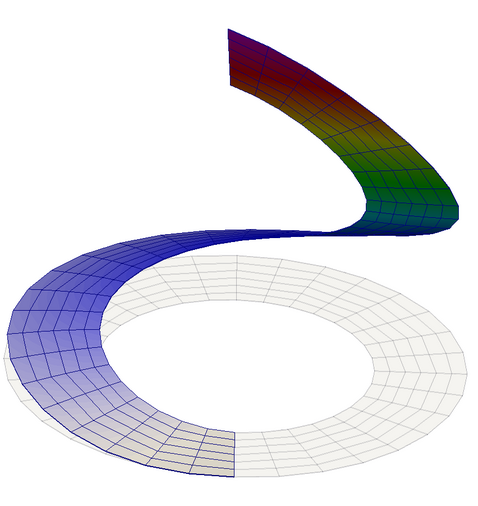Solid Dynamics: Solid-Shell Finite Elements
Alexander Seitz, Alexander Popp

Curved thin-walled structures combine a high load capacity with with low weight and can be found in various forms, from egg shells and arterial walls in biology over roofs in civil engineering to aircraft skins in mechanical engineering. A reliable simulation of such slender structures poses special difficulty on the development of finite elements, which suffer from various spurious locking effects due to their high aspect ratio. Frequently, shell finite elements are developed based on the degeneration concept, resulting in a mid-surface description. However, such formulations are difficult to extend to complex non-linear material behavior like plasticity, and since only the mid-surface is discretized, a sound contact formulation is difficult.
At our Institute, we therefore develop so-called "solid-shells" which have a fully three-dimensional continuum description, and hence the shell surfaces are discretized directly and can be used as a contact surface discretization. Higher order and smooth in-plane ansatz functions allow for smooth surface approximations. An efficient combination of the "enhanced assumed strain" (EAS) method and the "discrete strain gap" (DSG) method is used to avoid all typical locking effects. Finally, a robust formulation of anisotropic plasticity based on a semi-smooth Newton method is applied for the simulation of sheet metal forming processes.